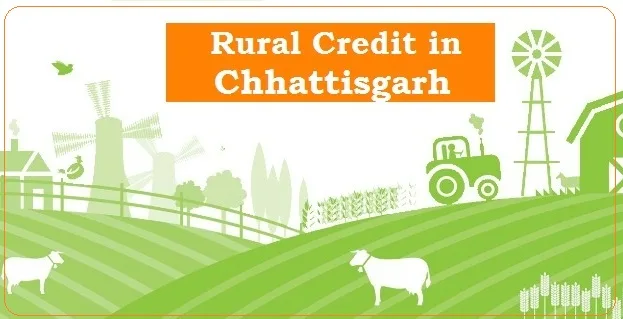
Agriculture credit is an important prerequisite for agricultural growth, especially the Rural credit system assumes importance because for most of the Indian rural families, savings are inadequate to finance farming and other economic activities. This coupled with the lack of simultaneity between income realization and expenditure and lumpiness of agricultural capital investments.
After independence of India, the Government adopted the institutional credit system approach for credit adequacy in rural areas. After the major banks were nationalized in 1969, commercial banks were mandated to open branches in rural areas. Institutional credit system is critical for agricultural development and its role has further increased in the liberalized economic environment. In India a multi-agency approach comprising co-operative banks, scheduled commercial banks and regional rural banks (RRBs) has been followed to allow credit to agricultural sector.
Sources of Rural Credit: Institutional and Non-Institutional
Non-Institutional Sources:
The non-institutional finance forms an important source of rural credit in India, constituting around 40 percent of total credit in India. The interest charged by the non-institutional lenders is usually very high. The land or other assets are kept as collateral. The important sources of non-institutional credit are as follows:
- Money lenders
- Traders, landlords and commission agents
- Relatives, etc.
Institutional Sources:
Providing better access to institutional credit for the small and marginal farmers and other weaker sections to enable them to adopt modern technology and improved agricultural practices has been a major thrust of the policy. National Bank for Agriculture and Rural Development (NABARD) is an apex institution established in 1982 for rural credit in India. It doesn’t directly finance farmers and other rural people. It grants assistance to them through the institutions described as follows:
- Co-operative Credit System:
- The Cooperative Societies can be defined as “an autonomous association of persons united voluntarily to meet their common economic, social, and cultural needs and aspirations through a jointly-owned and democratically-controlled enterprise”.
- The short-term co-operative credit structure operates with a three-tier system:
- Primary Agricultural Credit Societies (PACS) at the village level,
- Central Cooperative Banks (DCCBs) at the district level
- State Cooperative Banks (SCBs) at the State level
- Commercial Banks:
- The share of commercial banks in rural credit was very meager till 1969. After the major banks were nationalized in 1969, commercial banks were mandated to open branches in rural areas.
- The major expansion of rural branches took place and CBs introduced Lead Bank Scheme and District Credit Plans for rural areas.
- Banks were asked to lend 18 percent of their total advances to agriculture within the quota of 40 percent of priority sector lending.
- However, during late 80’s, they suffered huge losses due to waiving of agricultural loans by the government.
- After the adoption of Narasimham Committee Report in 1993, the proportion of bank credit to rural areas especially small borrowers has come down steadily.
- Regional Rural Banks (RRBs):
- On the basis of Report of Narasimham Working Group in 1975, RRBs were established under RRB Act, 1976 as the specialized banks to cater to the needs of the rural poor.
- RRBs are set-up as rural-oriented commercial banks with the low cost profile of cooperatives but with the professional discipline and modern outlook of commercial banks.
- The branch network of RRBs in the rural area form around 43 per cent of the total rural branches of commercial banks.
- A large number of branches of RRBs were opened in the un-banked or under-banked areas providing services to the interior and far-flung areas of the country.
- RRBs primarily cover small and marginal farmers, landless laborers, rural artisans, small traders and other weaker sections of the rural community.
- The RRBs were owned by three entities with their respective shares as follows: Central Government → 50%, State government → 15%, Sponsor bank → 35%
- Micro Finance Institutions (MFIs):
- A microfinance institution is an organization that offers financial services to low income populations. Almost all give loans to their members, and many offer insurance, deposit and other services.
- Small farmers are unable to access them because of borrower-unfriendly products and procedures, inflexibility and delay, and high transaction costs, both legitimate and illegal.
- After pioneering efforts by some organizations in 1992 the RBI and NABARD encouraged commercial banks to link up with NGOs to establish and finance self-help groups (SHGs) of the poor.
Availability of Credit in Chhattisgarh (as % of Total Advance)
| Sectors | 2016-17 | 2017-18 | 2018-19 |
| Priority Sector Advances | 49.35 | 48.7 | 50.09 |
| Agricultural Advances | 15.46 | 15.12 | 15.29 |
| MSME Advances | 25.04 | 24.4 | 24.79 |
| Advances to Women | 7.84 | 9.19 | 9.76 |
Challenges of Rural Credit
- Inadequate credit availability (only few get credit)
- Inadequate coverage of rural areas (financial exclusion)
- Lack of clarity and procedural delay for loan clearance (lengthy procedures)
- Overemphasis on monetary credit (technical knowledge and guidance neglected)
- Poor recoveries (rising NPAs)
- Poor management of credit institutions (amalgamation of societies)
NABARD
It is the apex banking institution to provide finance for Agriculture and rural development. National Bank for Agriculture and Rural Development (NABARD) was established on July 12, 1982 with the paid up capital of Rs. 100 cr. by 50: 50 contribution of government of India and Reserve bank of India. It is an apex institution in rural credit structure for providing credit for promotion of agriculture, small scale industries, cottage and village industries, handicrafts etc.
Role of NABARD:
1. It is an apex institution which has power to deal with all matters concerning policy, planning as well as operations in giving credit for agriculture and other economic activities in the rural areas.
2. It is a refinancing agency for those institutions that provide investment and production credit for promoting the several developmental programs for rural development.
3. It is improving the absorptive capacity of the credit delivery system in India, including monitoring, formulation of rehabilitation schemes, restructuring of credit institutions, and training of personnel.
4. It co-ordinates the rural credit financing activities of all sorts of institutions engaged in developmental work at the field level while maintaining liaison with Government of India, and State Governments, and also RBI and other national level institutions that are concerned with policy formulation.
5. It prepares rural credit plans, annually, for all districts in the country.
6. It also promotes research in rural banking, and the field of agriculture and rural development.

 Home
Home Syllabus
Syllabus Contact Us
Contact Us








